Moving to Tasmania
Price’s Removals & Storage offer a weekly door to door backload service to Tasmania from Melbourne / Sydney / Brisbane / Sunshine Coast / Gold Coast or any location between Melbourne and the Sunshine Coast
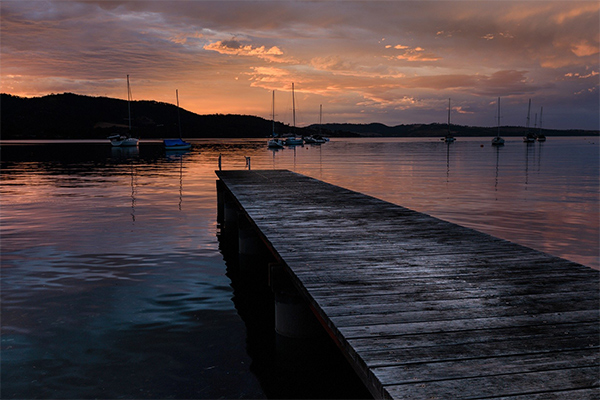
Move to Tasmania
Tasmania, known affectionately as Tassie, has a lot to offer. If you’re toying with the idea of moving off the mainland, you probably have lots of questions. In this guide, we’ll provide all the answers, offering useful information about living in Tasmania and tips for moving to Tasmania.
Finding work in Tasmania
One of the first tasks to tick off your list before you move to Tasmania is finding a job. The good news is that there are several methods you can use to find work. The primary industries in Tasmania include:
- Health and social care
- Education
- Construction
- Agriculture, forestry and fishing
- Professional, scientific and technical services
- Financial and insurance services
More and more residents are choosing to search online for jobs, but there are also recruitment agencies based in Tasmania. You can register with agencies that specialise in certain sectors or companies that advertise for a wide range of roles. The government careers site is an excellent place to look for vacancies within the education and healthcare industries.
The cost of living in Tasmania
If you’re thinking of moving to Tasmania, it’s helpful to compare the cost of living so that you have an insight into how much everyday items and expenses like rent cost before you decide to relocate. Statistics suggest that living in Tasmania is cheaper than residing in many of the large cities in Australia. Consumer prices are around 10% lower in Hobart than Sydney, and renting will cost you up to 38% less in Tasmania. The average cost of living for a family of four in Hobart is estimated at $4,405 per month without rent.
Working in Tasmania
Some people who move to Tasmania may want to keep hold of a job on the mainland, and there are also opportunities to work remotely, with flexible working becoming more commonplace across Australia. If you do want to find work in Tasmania, however, there is a diverse range of roles available. The healthcare sector is the biggest employer, but there are also many jobs in construction, agriculture, hospitality, professional services, financial and insurance services, arts and culture and tourism. The largest cities, Hobart and Launceston, tend to attract those searching for jobs in the finance, IT, communications, retail and hospitality sectors.
The weather in Tasmania
The weather in Tasmania is a subject of conversation that never fails to crop up in small talk and exchanges by the water cooler. This is because conditions are often more unpredictable than other areas. Tasmania’s geography and location mean that it has its own microclimate. The weather can change quickly without much warning, and it is possible to experience sun, showers, high winds and clear skies in a single day. Typically, the summer is the best time to visit, with drier conditions and plenty of warm sunshine. In the winter, temperatures can plunge dramatically, with snow a feature of forecasts most years. Autumn and spring tend to be pleasant, but there is a risk of rain and storm clouds.
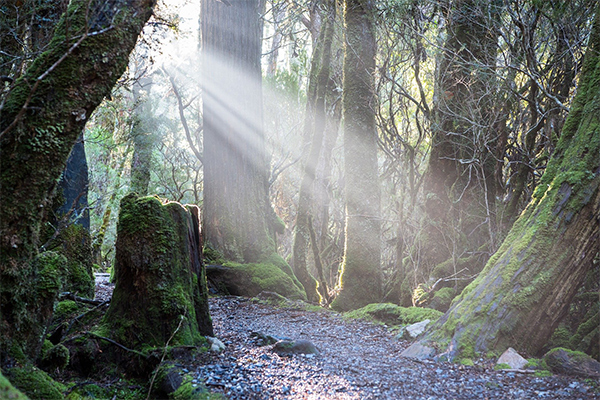
Reasons to move to Tasmania
There are several reasons to move to Tasmania. Living in Tasmania offers an array of benefits, particularly for those looking to embrace a new lifestyle and adopt a slower, more leisurely pace of life.
Affordable housing
It has become increasingly difficult to get onto the property ladder, and many buyers are also struggling to climb up the ladder once they’ve purchased their first home. Tasmania is one of the most affordable places to buy. Statistics suggest that the average house price in Hobart reached $420,000 in January 2019. This figure is significantly lower than the average prices in Sydney ($840,000), Melbourne ($665,000), Brisbane ($490,000) and Canberra ($591,000).
Slower pace of life
The population of Tasmania is around 540,000 and even the cities of Hobart and Launceston have a small-town feel. The pace of life is slower and more languid than in the large cities on the mainland and there’s scope to enjoy downtime and valuable hours away from the desk exploring mountains, lakes, national parks and beaches. The skylines are not dominated by skyscrapers and people tend to have a healthy work-life balance. If you move to Hobart or you’re planning a move to Launceston, you can enjoy the best of both worlds. There are jobs, there’s a vibrant cultural scene and there’s plenty to do, but you won’t feel like you’re caught up in a rat race or find yourself queuing in traffic for hours to get to work.
Thriving food and wine scene
For foodies and fans of wine tasting, Tasmania is a dream destination. Known for its fantastic wine trails, craft beers and bustling farmer’s markets, Tasmania has a vibrant, thriving culinary industry, attracting visitors from all over the world. There’s an abundance of restaurants, cafes, pubs and delis selling all kinds of wonderful local produce.
Buoyant housing market
New data shows that Tasmania’s housing market is growing at pace. Currently the fastest-growing market in Australia, prices increased by 12% in 2020. With demand for properties rising and moving to Tasmania an increasingly appealing option, the upward trend looks set to continue, making 2021 an excellent time to buy.
Island living
There’s something magical about living on an island and being able to explore all four corners within a short period of time. The island spans 68,000 square kilometres, offering visitors and residents the opportunity to discover diverse geography and spectacular natural features, as well as charming towns and lively cities. It takes around 3 hours to drive from Hobart to Launceston and the island is a fabulous location for road trips and short breaks. The scenery is incredible and you can experience all kinds of different views and landscapes in a single day. From beaches and mountains, to rainforests and fishing villages, there’s something to see around every corner.
Escape the hustle and bustle
One of the most common reasons people move to Tasmania is to escape the hustle and bustle and embrace a more tranquil, relaxing lifestyle. If you’re used to wasting hours of your day sitting in a traffic jam, or you’re sick of sharing your daily commute with hundreds of tired, grumpy passengers on a train or bus, the idea of a short commute and a slower pace of life might appeal. As well as saving time and eliminating the stress of busy schedules, life in Tasmania could also provide opportunities to form new relationships and become part of strong, tight communities. City living can be impersonal, and you might find that you don’t know your neighbours despite the fact that you’ve lived next to them for years. Tasmania is famed for its friendly residents and people tend to make an effort to socialise together and check in on their neighbours.
What are property prices like in Tasmania?
Tasmania is an attractive option for families, singles and couples looking to buy real estate and get more for their money. House prices are lower than Sydney, Melbourne, Brisbane, Perth and Canberra, and there’s a diverse range of options available to suit all budgets. Prices on the island are highest in Hobart, with the average dwelling costing $555,000 in Hobart in September 2020. If you move to Launceston, you’ll find that prices are slightly lower, with the average house costing around $514,000 in 2020. Away from the cities, average prices decrease. The beauty of buying in Tasmania lies in being able to explore a diverse array of properties and neighbourhoods. From traditional-style detached houses on tree-lined streets and trendy city-centre apartments to remote cottages and seaside boltholes, there is something for everyone.
Where is the best place to live in Tasmania?
If you surveyed Tasmania’s population, you’d find a range of answers. The truth is that there is no right or wrong answer to this question, and the location you choose will depend on your preferences, the lifestyle you want to lead, your budget, your job and how you want to spend your free time. Hobart is the most populous city and it has a huge amount to offer, including picturesque scenery, a lively food and wine scene, plenty of shops and restaurants and easy access to the beach. Launceston is the second-largest city. It is quieter and smaller, but there’s plenty going on and it has some stunning suburbs nestling on the Tamar River. There are also many other options that may tick your boxes, particularly if you’re looking to enjoy the good life in the countryside or put down roots by the seaside. If you’re weighing up the options trying to determine the best places to live in Tasmania, it’s always beneficial to explore different areas and do some research before you make a decision.
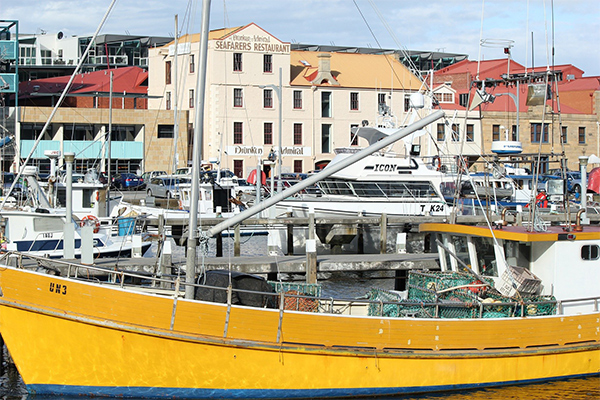
Sports and Recreation in Tasmania
If you’re a fan of sports and outdoor living, you won’t be disappointed if you choose to move to Tasmania. A natural wonderland that is blessed with all kinds of geographical features, life in Tasmania is geared towards exploring the great outdoors and making the most of the spectacular scenery. There’s also a wide range of sports you can participate in or follow from the comfort of your armchair. Here are some suggestions to keep you busy:
Mountain biking
Mountain biking is a brilliant way to discover Tasmania’s dramatic landscapes and to work up a serious sweat. Tasmania boasts an abundance of fantastic trails to suit all levels of fitness and experience, but perhaps the best places to flex the quads and enjoy the views are St Helens and Derby. St Helens bike trails take you from the shoreline to the mountains or vice-versa, covering diverse terrain and posing unique challenges for amateurs and experienced riders. There are various trails on offer in St Helens, including an awe-inspiring 42 km wilderness track that starts at the peak of Blue Tier and winds its way down to Swimcart Beach. There is a selection of loops close to the town and every ounce of effort is rewarded with incredible vistas of mountain ranges and the breathtaking Bay of Fires.
The other contender for the best place to go mountain biking in Tasmania is Derby. Nestled in the lush forests of North East Tasmania, Derby is home to an intricate network of biking trails that affords the chance to ride alongside giant ferns and mammoth granite monoliths. Biking here is an adrenaline-fuelled adventure, which provides endless thrills and spills in a truly beautiful setting.
Basketball
Followers of the NBL and new Tasmania residents looking to throw their weight behind a team can indulge a love of basketball by keeping tabs on the Jack Jumpers. Basketball is becoming increasingly popular in Tasmania and game nights are always a lively affair. For those who like to play, as well as watch, the best places to hone your skills on the court are Hobart and Launceston.
AFL
Aussie Rules enthusiasts can catch games in Hobart and Launceston, with the opportunity to see teams take to the field at venues like the University of Tasmania Stadium. Keep an eye out for fixture lists and ticket release dates if you’re keen to join the crowds and support your favourite team. The Hawthorn Hawks, based in Victoria, use the stadium most frequently.
Cricket
Nothing beats a day at the cricket! If you’re a fan of cricket, and you enjoy following the BBL, you can switch allegiance to the Hobart Hurricanes and support your new local team. The Hurricanes have a passionate fan base and going to the game is a popular way to spend an evening or a weekend with friends and family. Hobart Hurricanes play their home fixtures at the Blundstone Arena.
Golf
There are several golf courses scattered across Tasmania and golf fans will be spoiled for choice when it comes to choosing where to test their mettle. The geography and unpredictable weather make golfing in Tasmania challenging, but hugely enjoyable. Barnbougle is the standout destination for golfers on the island. This prestige location is home to two of the top ten courses in Tasmania: The Dunes and Lost Farm. Golfing here is about utilising skill and guile, but it’s also about appreciating the rugged, wild scenery.
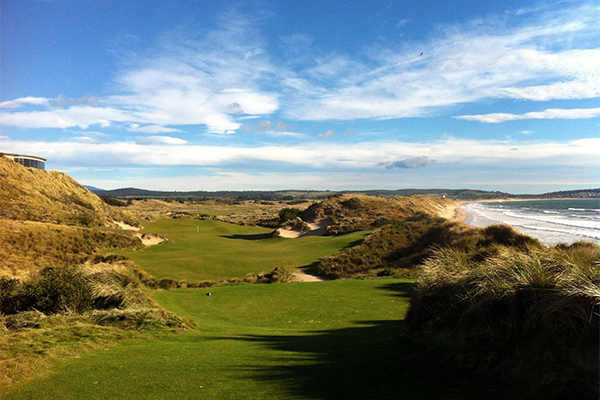
Moving across Bass Strait
Moving across the Bass Strait is an exciting proposition, but it may be one that fills you with a degree of trepidation. It’s easy to assume that relocating across the sea is stressful or complex. The good news is that with expert Bass Strait removal companies, it couldn’t be simpler to organise your move. You can choose to hire a specialist firm, or you can do it yourself by packing up your car or van and crossing the waves on the Spirit of Tasmania. This is a cheaper option, but it might not be a viable solution for those travelling with a lot of possessions.
Moving checklist
Moving house, let alone state, can be stressful. This is why it’s a great idea to plan ahead. Once you’ve decided that you’re moving to Tasmania, you’ve started looking for jobs and properties and you’re ready to start packing, work your way through a checklist to ensure that everything is done before you move. Here are some jobs to include on your list:
- Utilities: before you leave your current property, you’ll need to contact your utility providers to settle any final bills and inform them that you are relocating. When you get to Tasmania, you can compare prices and quotes from new providers online.
- Phone, Internet and TV: if you currently have contracts for broadband, TV and your phone, it’s worth asking if you can transfer services to your new address. If this is not possible, you’ll need to cancel the current contract and look for a new provider in Tasmania.
- Contents insurance: before you move, check whether your contents insurance covers moving house. If it doesn’t, you’ll need to take out additional insurance to protect your possessions while in transit.
- Mail forwarding: change your address and arrange for your mail to be forwarded before you move. You will need to contact your bank and doctor and dentist surgeries to inform them that you are moving and provide a new address where applicable. If you don’t have a forwarding address at the moment, you can use a PO Box address based in Tasmania.
- Research quarantine: there are certain items that may be restricted under quarantine rules in Tasmania. Make sure you are aware of these before you travel to prevent delays and disruptions.
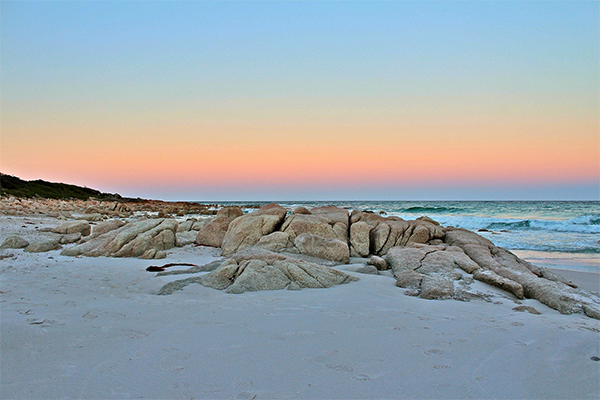
FAQs
- Is Tasmania a good place to live? Tasmania is a fabulous place to live. With stunning scenery, a thriving housing market, a diverse range of jobs available and an enviable pace of life, there’s so much to be excited about if a move to Tasmania is on the cards!
- How much does it cost to move to Tasmania? The cost of moving to Tasmania will depend on several factors, including the location you’re moving from, the amount of stuff you are moving and whether you require special services, such as packing or transporting valuable items. There are two main options when it comes to comparing moving to Tasmania costs. You can make the journey independently or you can hire a removals firm to oversee your move for you. If you’re looking to book a removal, it’s wise to get quotes and to read reviews and client testimonials.
- Where is better to live, Hobart or Launceston? Hobart and Launceston are the two main cities in Tasmania and both are popular choices for people moving to the island. Hobart is bigger, it offers a lot in the way of culture and entertainment and it’s ideally located for getting out and about and enjoying the great outdoors. Hobart is popular with professionals looking for jobs in finance, IT and hospitality. Launceston is slightly smaller, it has a very friendly feel and it’s most popular with young professionals and families. The nearby Tamar Valley is a draw for outdoor enthusiasts and those keen to spend their weekends admiring the views.
- Is it difficult to find work in Tasmania? It may be more difficult to find work in Tasmania than some of the big cities on the mainland, but if you’re looking for jobs in education, health and social care, agriculture, forestry and fishing, construction or financial services and you have the relevant qualifications and expertise, you shouldn’t find it too difficult to get a job. Registering with recruitment agencies and signing up for alerts online can make the search easier.
Useful Information Moving to Tasmania
Tasmania has very stringent quarantine regulations. To find out more about what you can and can’t bring into Tasmania, please see The Department for Industries, Parks, Water and the Environment website on Tasmania Quarantine Regulations.
For Tourism Information for Tasmania, please see Discover Tasmania.
For information on property in Tasmania, please see the Real Estate Institute of Tasmania.
For information on moving to Tasmania, please see Migrating to Tasmania website.
